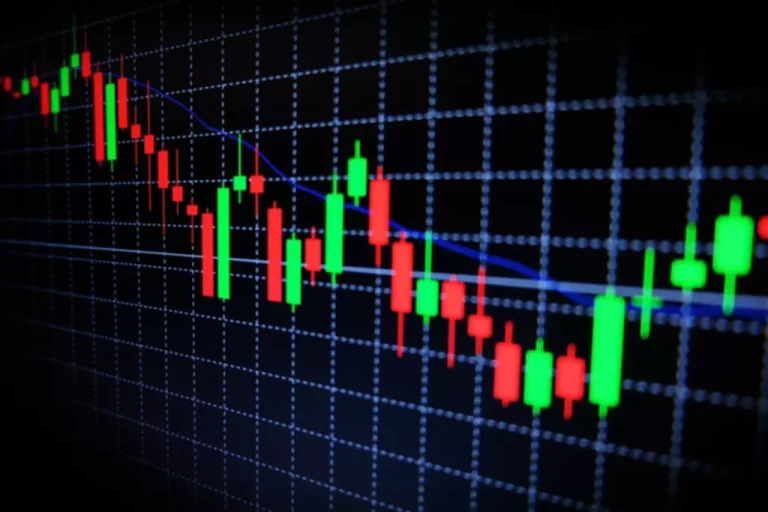Core Liquidity Suppliers Vs: Market Makers: What’s The Distinction
The transition to automation has introduced the rise of algorithmic market makers, entities that leverage cutting-edge know-how and AI to execute trades. While MMs provide Mining pool a broader range of companies and LPs are much more specialised, both establishments are irreplaceable for the growth and long-term growth of the forex trade. Top-tier liquidity providers throughout the globe be positive that this market doesn’t go down with the frequently changing circumstances.
Regulatory Framework For Liquidity Suppliers And Market Makers
This is as a result of they actively take part out there by taking positions and holding inventory. As a end result, their actions can have a larger impression in the marketplace than core liquidity providers. They face the risk of opposed worth movements and the potential of being caught with securities that they can’t sell https://www.xcritical.in/. To mitigate these dangers, they make use of sophisticated trading algorithms and threat management methods. The evolution of market making in crypto has taken a shift in course of an automated, algorithm-driven process that has reshaped the financial panorama over the previous many years.
- They earn a profit by buying securities at a lower cost and promoting them at a better price.
- Similarly, in the Forex, stock or crypto markets, liquidity is a vital factor that reflects an investor’s capability to purchase or promote currencies and other assets shortly.
- The worlds of market makers and liquidity suppliers often intersect, but they function with distinct mechanisms and aims.
- Instead, they act as intermediaries between patrons and sellers, guaranteeing that there’s always a counterparty for every commerce.
Prime 8 Forex Brokerage Licenses Providers
Both of these entities play an important function within the monetary markets, but they differ of their method to offering liquidity. In this part, properly take a extra in-depth market maker vs liquidity provider look at the introduction to CLPs and Market Makers and discover the important thing differences between them. On the other hand, a liquidity supplier is a broader term that encompasses various entities, together with market makers, brokers, and different members. Liquidity suppliers focus on offering liquidity to the market by offering bid and ask prices. Both liquidity providers and market makers provide liquidity sourcing to various forex sectors, together with local and international regions. Understanding the distinctions between liquidity suppliers and market makers is crucial for merchants aiming to optimize their methods.
Liquidity Supplier Vs Market Maker: Why Does The Forex Market Want Both?

They earn a profit by shopping for securities at a lower cost and promoting them at the next price. Market makers typically function in specific markets or securities and are subject to regulatory necessities. CLPs typically have direct market entry (DMA) to the market, which suggests they’ll execute trades immediately on the trade.
Overview Of Crypto30x: Is It Legit Or A Scam?
Market makers present liquidity by constantly shopping for and promoting securities, guaranteeing that there’s always a prepared marketplace for traders to commerce. This constant availability of costs and the ability to execute trades rapidly is a major benefit of market makers. Entities generally identified as liquidity suppliers (LPs) and market makers (MMs) play crucial roles in the smooth execution of transactions inside advanced financial markets. These entities, ranging from wealthy institutional investors to global firms, inject liquidity into markets, allowing for the environment friendly buying and promoting of belongings. This process is essential for maintaining a balanced market setting, particularly throughout substantial trade volumes. This article explains the distinction and their function within the cryptocurrency context.
This stability is basically necessary for traders and merchants as a end result of it makes the market much less uncertain and helps them feel extra confident about buying and selling. Understanding the differences between Core liquidity Providers and market Makers is essential for traders who wish to navigate the financial markets efficiently. Both entities play a vital role in offering liquidity for financial devices, but they differ of their approach.
CLPs are topic to regulations that require them to keep up a sure degree of liquidity and transparency. Market Makers are also subject to regulations, but their obligations could range depending on the jurisdiction and the type of securities they commerce. First, you need to search for a provider with a strong popularity and monitor report. This will assist to ensure that they’ve the expertise and assets to offer dependable liquidity.
By committing to buy and sell property, they typically act as a stabilizing drive, especially in area of interest or much less liquid markets. Their continuous presence can forestall abrupt market gaps and supply a sense of reliability to different market individuals. Liquidity suppliers typically have contractual agreements with aggregators or brokers, whereas market makers could have contracts with exchanges or trading platforms. Liquidity suppliers are market participants, usually major monetary establishments or firms, that guarantee there is an ample provide of property out there for active buying and selling.
Following these pointers helps brokerages maintain credibility and guarantee the seamless operation of the financial ecosystem once they work with market makers and liquidity providers. Their main role is to supply ongoing market liquidity, hence bridging the supply-demand imbalance. Quoting bid (buy) and ask (sell) prices for an asset shows their readiness for trading. By guaranteeing that assets are continuously accessible for commerce, no matter more common market circumstances, they thus perform a significant service. Both Core Liquidity Providers and Market Makers play necessary roles in offering liquidity to the market.
As such, merchants face the situation after they can not purchase and promote currencies by the market value. Traders entry zero spreads (no differences between bid and ask prices).To summarize the difference between market maker vs liquidity provider, keep in mind that their roles diverge. MMs are responsible for FX inflows and outflows, maintaining the market active whereas a liquidity supplier is a bridge between brokerage companies and market makers. By actively quoting bid and ask prices, market makers play a pivotal position in facilitating buying and selling actions in financial markets.
CLPs are sometimes used in electronic buying and selling techniques the place they supply liquidity to traders. They are also utilized in markets where there aren’t enough market members to provide liquidity. All the above info and explanation are associated to Tier 1 liquidity suppliers.

This creates an surroundings where patrons and sellers can simply transact, leading to a smooth and efficient market. Market makers enhance market efficiency by narrowing bid-ask spreads, which is the difference between the very best worth a purchaser is prepared to pay and the lowest value a seller is keen to accept. Liquidity suppliers, including market makers, cut back market volatility by absorbing excess shopping for or promoting stress.
Today, even the smallest corporations can theoretically turn into brokers, provide banking services, create e-commerce retailers and much more. Previously, none of these actions were even accessible to companies with limited budgets. Tier 2 LPs are a superb example of digital disruption, allowing smaller companies to liaise between tier 1 LPs and the final forex market.
Tier1 liquidity suppliers are probably the most respected banks and institutions, similar to Deutsche Bank and Bank of America. These organisations interact and trade with each other directly through the ECN system, thus forming the interbank market. Tier2 suppliers are smaller companies which usually serve as intermediaries between brokers and the interbank market.
Liquidity providers supply deep liquidity and aggressive pricing, contributing to market efficiency and stability. Market makers guarantee continuous liquidity and instant trade execution but may have conflicts of interest and face regulatory challenges. The foundation of effective buying and selling in monetary markets are liquidity providers, or LPs. Unlike market makers who actively construct a market by quoting each purchase and promote prices, liquidity suppliers usually provide asset values relying on the state of the market. Their primary aim is to provide the market more complexity in order that massive orders could also be fulfilled with out considerably affecting asset values.

Leave a Reply